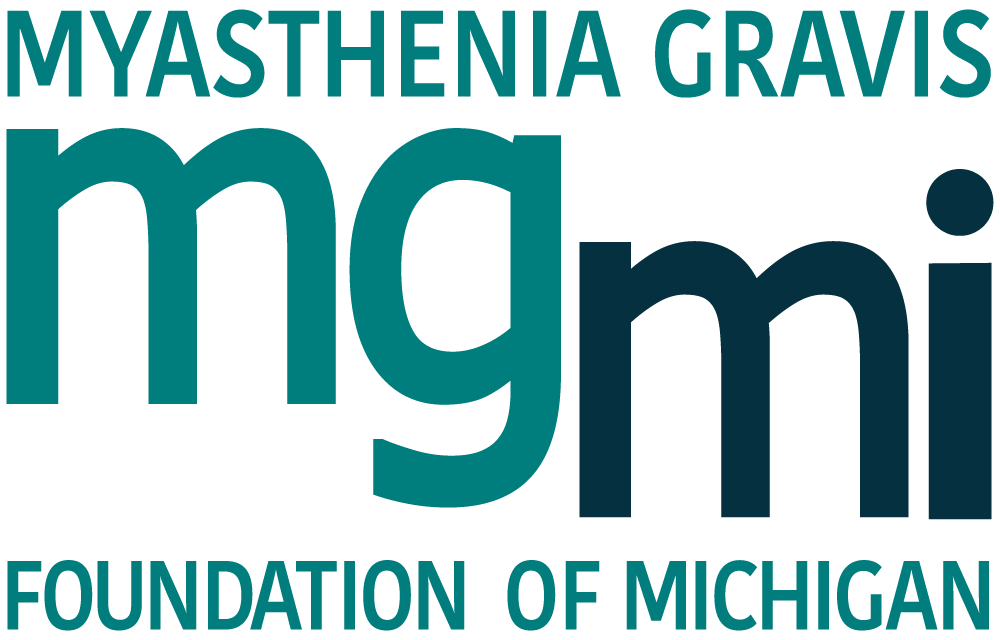Myth: CPAP and BiPAP machines are the same
Actually: CPAP stands for Continuous Positive Airway Pressure. It is commonly used to treat obstructive sleep apnea. A CPAP machine uses air pressure blown through a tight-fitting face mask to prevent the airway from collapsing during sleep. BiPAP stands for Bi-level Positive Airway Pressure. BiPAP has two levels of pressure— high pressure to help inhale air into the lungs and low pressure to allow air to be exhaled from the lungs. BiPAP is used by patients with neuromuscular diseases because the weak respiratory muscles cannot exhale against the high CPAP air pressure.
Myth: BiPAP is only used in the hospital during MG crisis
Actually: BiPAP is a common intervention to help avoid intubation for MG patients who are in myasthenic crisis. BiPAP functions like a ventilator, but uses a tight-fitting mask on the face rather than a tube down into the trachea. BiPAP can be used by patients at home during the night to correct shallow breathing during sleep, and during the day to relieve shortness-of-breath. Home BiPAP machines are small, quiet, and easy to use.
Myth: A sleep study is required in order to get a BiPAP
Actually: A sleep study is required to diagnose obstructive sleep apnea and qualify the patient for a CPAP machine. Different criteria are used to determine that BiPAP machines are needed for patients with neuromuscular disease. Test results used to qualify MG patients for BiPAP therapy include:
– Forced Vital Capacity < 50% of expected value
– Maximum Inspiratory Pressure (MIP) < 60 cm H20.
– Arterial Blood Gas (ABG) shows carbon dioxide level > 45 mm Hg
Myth: MG patients must fail CPAP before getting a BiPAP
Actually: Patients with sleep apnea are required to start with a CPAP machine before insurance will pay for a BiPAP machine. Medical equipment companies are often unfamiliar with the qualifying criteria used for patients with neuromuscular diseases, and may sometimes tell patients that CPAP must be tried first. Patients should always check with their insurance companies about their individual policies and coverage requirements, but the test results shown above are generally-accepted guidelines. Additional information about qualifying guidelines can also be found at: https://www.resmed.com/us/dam/documents/articles/1010293_RAD_Guidelines.pdf
Myth: BiPAP masks are huge and uncomfortable
Actually: BiPAP masks used by hospitals to treat inpatients are designed for economy rather than comfort. They are intended to be used by one patient for a short period of time and then discarded. In contrast, a wide variety of BiPAP masks are available for home use to accommodate patient preferences and sleep positions. For patients who dislike the full face masks, nasal masks cover only the patient’s nose while nasal pillows fit snugly underneath the nostrils. BiPAP masks are designed to allow for unobstructed vision, facial hair, and eyeglasses while minimizing the risk of skin breakdown on the face.
Myth: BiPAP is not needed until breathing gets really bad
Actually: It’s never too early to think about breathing needs. Subtle signs that indicate breathing may be impaired include:
– Morning or daytime headaches
– Difficulty waking up
– Shortness of breath when lying down
– Morning grogginess
– Unexplained sleepiness
MG patients who have weak respiratory muscles should speak with their neurologist about home BiPAP before breathing symptoms become severe. It is better to start BiPAP when pulmonary function tests are borderline, rather than to wait until signs of respiratory failure finally appear.

